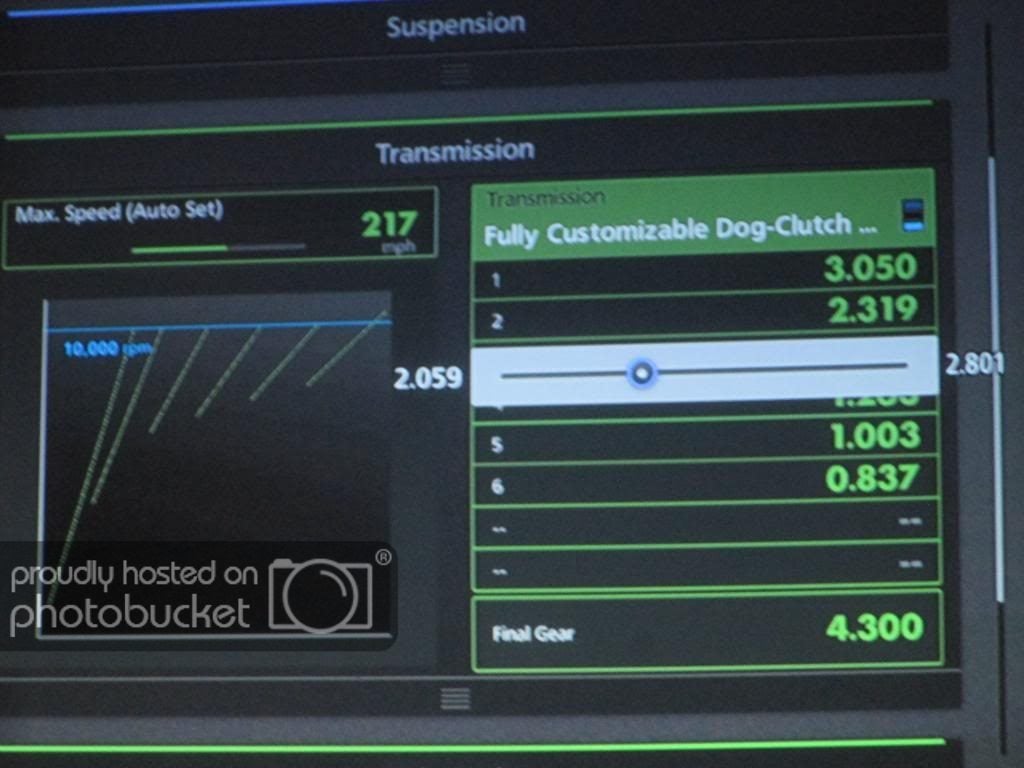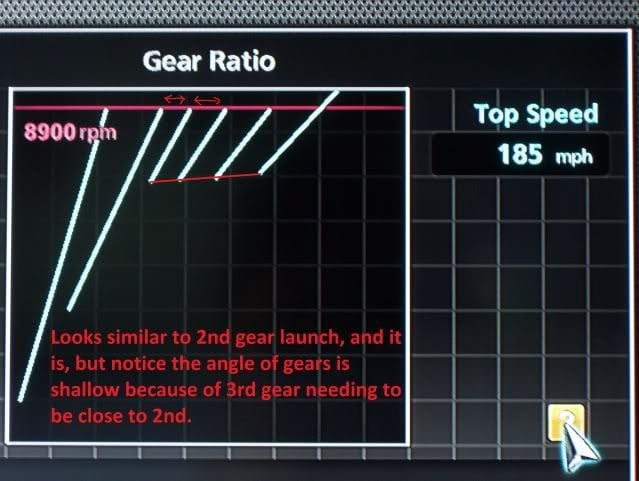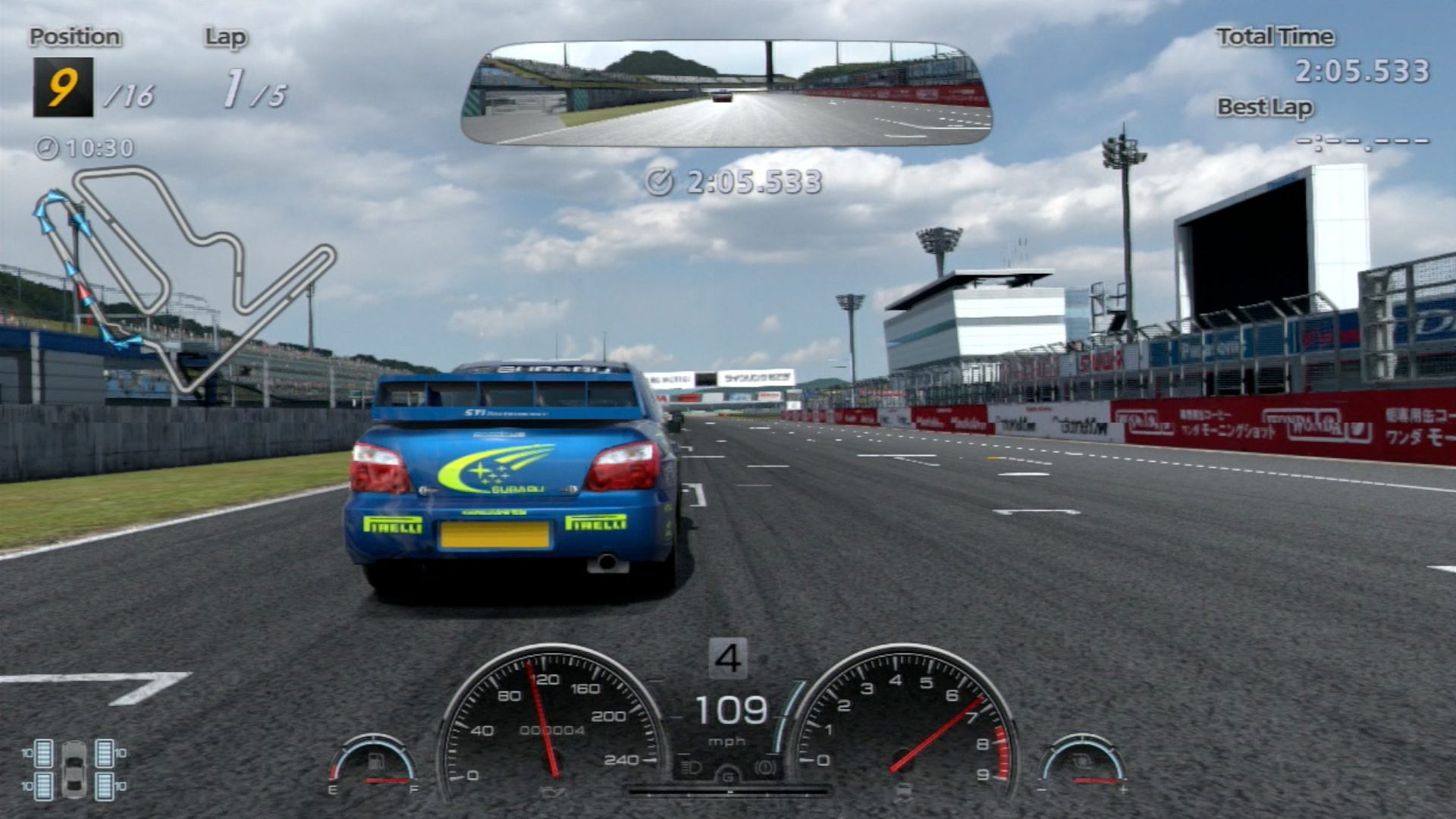- 146

- Florida
- jblackrevo9
How many of you guys out there always wonder why other drivers pass you with ease?
Most of the time,well actually your problem is that your gears are not set with in the bandwidth of the engine's horsepower and torque!!!

(From Google.)
Look at the chart above...
You have a scale of 0 to 7000 rpm. Notice that most of the power is near/at 7000 rpm with a slight decrease at 7000 rpm. Your goal is to set your gear close to the maximum revolutions per minute (rpm).
In this example, the FIT RS 2010 puts out 117 hp and 107 pounds or torque.
To achieve the this vehicle's most potential. Look at the graph and divide it into 4 equal sections.
7000rpm / 4 = 1750
Now you know that 1/4 of 7000 rpm is 1750.
Look at the graph again. Pay close attention. To make it easier, take a pencil and use that to have a good guide of the four equal sections.
Again, most of the engine's power is near 7000,therefore you need to have your gear within its power. Pay attention to where your engine's hp and torque meet. That should be your minimum for the lowest point for any gear you prefer to be long or short enough to shift into. Anything below this point and you can severely disturb your momentum.
(These are just numbers just as example.)
Take the 1750 you have and subtract it by 7000rpm
7000 rpm - 1750 = 5250 rpm (Yes I know of the torque/hp meeting but I'm not talking about that.)
Look at your graph again.
I hope you guys remember the 4 equally divided sections. If you did this right, you should know that 5250 rpm is almost exactly where the hp and torque intercept. This is the lowest point in the rpm bandwidth. Again, anything lower than this and you will lose your momentum.
Now that you figured this out, now we can begin set gears.

(From Google.)
(Notice that in the graph above, the lines are longer. Since they are long, your gear range will be too.)

(From google.)
(Notice in this graph, the lines are shorter and since they are shorter, your gear range will be shorter.)
I'm going to make this simple for ya'll.
The lines above, represent the range for your gears. For example, if the lines are really short, your gears will be in a higher bandwidth.
Example.
You have a rpm range of 0 to 10,300 rpm (Rx8 concept bandwidth)
Shorter gear (short lines) will have you between 8,000 rpm and 10,300.
Compared to longer ranges (longer lines) that will have you between 5,000 rpm to 10,300.
For the Fit, your lines need to be shorter in order to be with in the vehicle's peak performance.

Look at the example above.
Look at the tachometer. You see the number 5 and 7 (which is in the red line). That is your bandwidth and where your gears need to shift within. Again, anything below 5, will have you shifting below, causing the car to under perform when accelerating.
When you have your gears set, you can increase the car's acceleration by moving the Final gear ratio to the right when your gears are set.
Do not change gear after increasing acceleration or decreasing ( unless you car's peak performance has changed, then you will need to find the bandwidth again), if you do this, you can mess up your vehicle's momentum.
I hope I made this simple for you guys.
Feel free to shoot me some questions.
You know the name....Jblackrevo9 (see you online)
Most of the time,well actually your problem is that your gears are not set with in the bandwidth of the engine's horsepower and torque!!!

(From Google.)
Look at the chart above...
You have a scale of 0 to 7000 rpm. Notice that most of the power is near/at 7000 rpm with a slight decrease at 7000 rpm. Your goal is to set your gear close to the maximum revolutions per minute (rpm).
In this example, the FIT RS 2010 puts out 117 hp and 107 pounds or torque.
To achieve the this vehicle's most potential. Look at the graph and divide it into 4 equal sections.
7000rpm / 4 = 1750
Now you know that 1/4 of 7000 rpm is 1750.
Look at the graph again. Pay close attention. To make it easier, take a pencil and use that to have a good guide of the four equal sections.
Again, most of the engine's power is near 7000,therefore you need to have your gear within its power. Pay attention to where your engine's hp and torque meet. That should be your minimum for the lowest point for any gear you prefer to be long or short enough to shift into. Anything below this point and you can severely disturb your momentum.
(These are just numbers just as example.)
Take the 1750 you have and subtract it by 7000rpm
7000 rpm - 1750 = 5250 rpm (Yes I know of the torque/hp meeting but I'm not talking about that.)
Look at your graph again.
I hope you guys remember the 4 equally divided sections. If you did this right, you should know that 5250 rpm is almost exactly where the hp and torque intercept. This is the lowest point in the rpm bandwidth. Again, anything lower than this and you will lose your momentum.
Now that you figured this out, now we can begin set gears.

(From Google.)
(Notice that in the graph above, the lines are longer. Since they are long, your gear range will be too.)

(From google.)
(Notice in this graph, the lines are shorter and since they are shorter, your gear range will be shorter.)
I'm going to make this simple for ya'll.
The lines above, represent the range for your gears. For example, if the lines are really short, your gears will be in a higher bandwidth.
Example.
You have a rpm range of 0 to 10,300 rpm (Rx8 concept bandwidth)
Shorter gear (short lines) will have you between 8,000 rpm and 10,300.
Compared to longer ranges (longer lines) that will have you between 5,000 rpm to 10,300.
For the Fit, your lines need to be shorter in order to be with in the vehicle's peak performance.

Look at the example above.
Look at the tachometer. You see the number 5 and 7 (which is in the red line). That is your bandwidth and where your gears need to shift within. Again, anything below 5, will have you shifting below, causing the car to under perform when accelerating.
When you have your gears set, you can increase the car's acceleration by moving the Final gear ratio to the right when your gears are set.
Do not change gear after increasing acceleration or decreasing ( unless you car's peak performance has changed, then you will need to find the bandwidth again), if you do this, you can mess up your vehicle's momentum.
I hope I made this simple for you guys.
Feel free to shoot me some questions.
You know the name....Jblackrevo9 (see you online)
Last edited:



 I'm sitting in 11th place atm on the leaderboards so maybe this monkey got something right, Lord knows its not my driving that got me there.
I'm sitting in 11th place atm on the leaderboards so maybe this monkey got something right, Lord knows its not my driving that got me there.  Even a blind squirrel finds a nut once in awhile.
Even a blind squirrel finds a nut once in awhile.